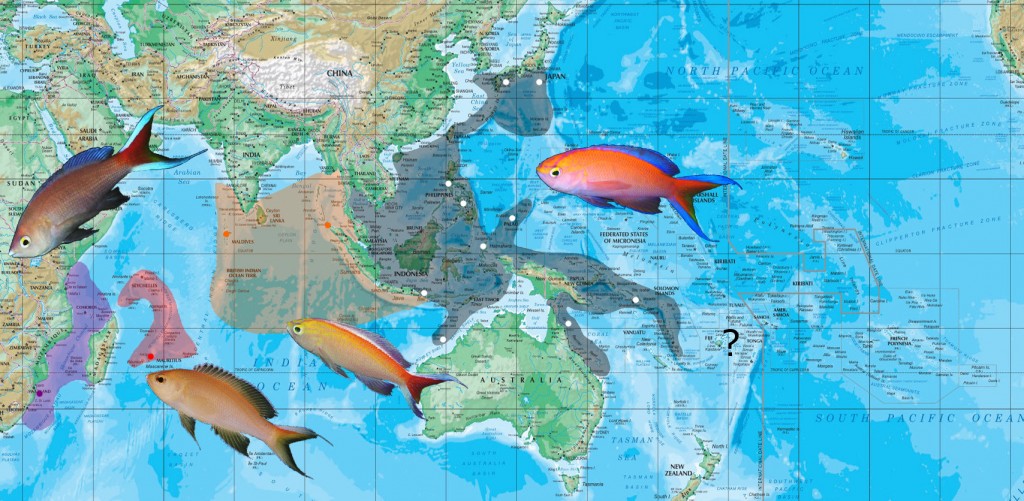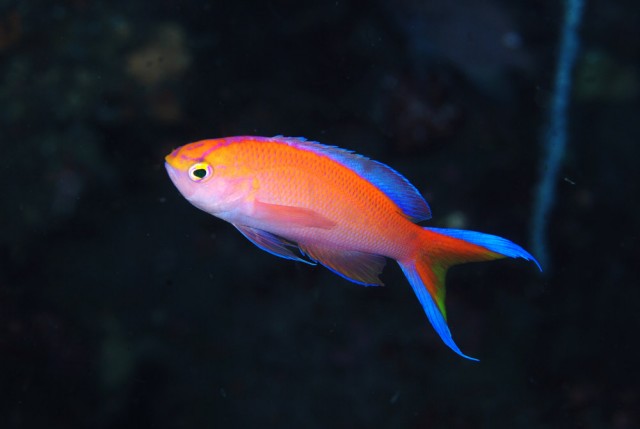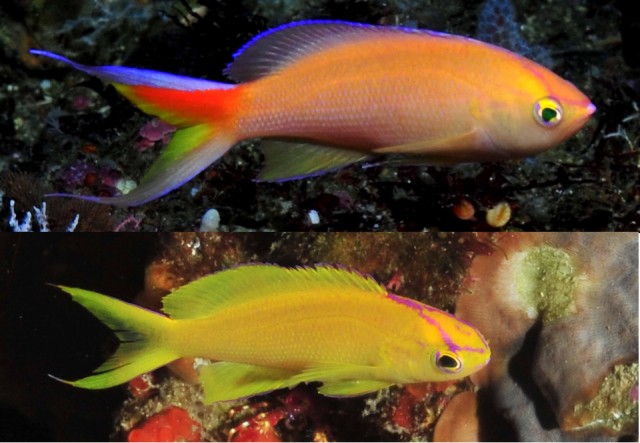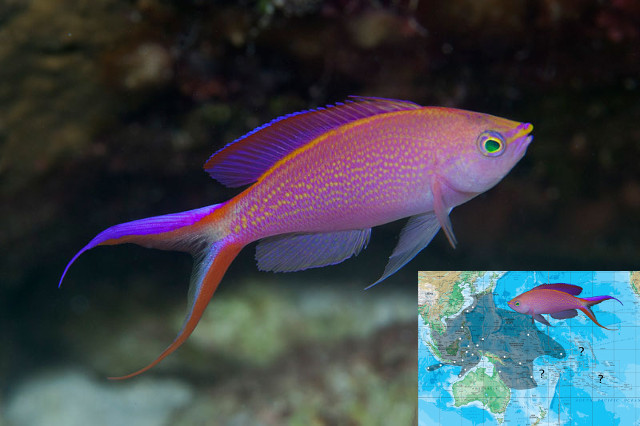The Immaculate Clade: smithvanizi, parvirostris, unimarginatus, bimarginatus & cf bimarginatus “Africa”

This clade can be recognized by the thick lavender margins of the caudal fin and the usual presence of a thin red stripe along the base of the dorsal fin. Four of the five species are allopatrically distributed. The West Pacific P. parvirostris is a somewhat common aquarium export, as is its sister species in the Maldives and Andaman Sea, P. bimarginatus. These two are best told apart by the coloration of the caudal fin, which is centrally yellow in parvirostris, though this can be somewhat variable.

P. parvirostris from Japan. Credit: hossy

The white margins of the caudal fin allow diagnose P. bimarginatus (left) and P. unimarginatus (right). Credit: John Randall
The Mauritian endemic P. unimarginatus has, to the best of my knowledge, never been made available to aquarists, but this may eventually change given that collection does occur within its range. It can be recognized by lacking the white margin on the lower lobe of the caudal peduncle (hence the name “unimarginatus”).

Male and female of the African P. cf bimarginatus. From Sodwana Bay, South Africa. Credit: Peter Timm & Eve Marshall
Lastly, a recent discovery of a population occurring at 69m off Sodwana Bay in South Africa is likely to be a new species. It bears an uncanny similarity to the geographically distant bimarginatus, but this new form seems to entirely lack the thin dorsal stripe. A recent review of the Pseudanthias of the Western Indian Ocean makes no reference to this species, so this is genuinely a new and exciting discovery. Specimens are likely to occur along the Kenyan coast where aquarium collection occurs, and it’s possible this species has slipped into exports before as a misidentified P. bimarginatus. If you happen to have one, be so kind as to send it to your nearest ichthyological taxonomist.

P. smithvanizi from Palau. Credit: argo-dive
The final species to discuss is the West/Central Pacific P. smithvanizi, which is presumably basal in this clade and differs in its purple-colored body and more-colorful dorsal fin. It is occasionally available, and at a modest price.
All of these species (though less so in P. smithvanizi) are measurably smaller in overall body length than nearly any other Pseudanthias. Within Mirolabrichthys, this is the only group which appears to have never developed the extended upper lip in males. Combined with the absence of an eye stripe, there is ample evidence to suggest that this clade is a paedomorphic variation on the typical Pseudanthias morphology.
Acknowledgements
My thanks to Brian Greene & Lemon Tea Yi Kai for lending their thoughts on the subject. Images used in maps are: bicolor (Heematra & Akhilesh), dispar (Mossimo Boyer), ignitus (unknown), carberryi (Milan Kořínek), bartlettorum (aqua rise), regalis (Luiz Rocha), pascalus (John Randall), pascalus “Tahiti” (Jeffrey Williams), pascalus “Fiji” (Ryan Photographic), tuka (Karen Honeycutt), evansi (Masamichi Torisu), aurulentus (unknown), cf aurulentus (Lemon Tea Yi Kai), privitera (Jim Walters), flavoguttatus (manboon), “Sunrise” (ceppo), lori (manboon), smithvanizi (argo-dive), parvirostris (hossy), bimarginatus (Roger Steene), unimarginatus (John Randall), cf bimarginatus “Africa” (Peter Timm)
References
- Heemstra, P. C. 1973. Anthias conspicuus sp. nova (Perciformes: Serranidae) from the Indian Ocean, with comments on related species. Copeia 1973 (no. 2): 200-210.
- Heemstra, P. C. and K. V. Akhilesh. 2012. A review of the anthiine fish genus Pseudanthias (Perciformes: Serranidae) of the western Indian Ocean, with description of a new species and a key to the species. aqua, International Journal of Ichthyology v. 18 (no. 3): 121-164.
- Herre, A. W. C. T. 1955. Remarks on the fish genus Mirolabrichthys, with description of a new species. Copeia 1955 (no. 3): 223-225.
- Randall, J. E. 1979. A review of the serranid fish genus Anthias of the Hawaiian Islands, with descriptions of two new species. Contributions in Science (Los Angeles) No. 302: 1-13.
- Randall, J. E. and R. Lubbock. 1981. A revision of the serranid fishes of the subgenus Mirolabrichthys (Anthiinae: Anthias), with description of five new species. Contributions in Science (Los Angeles) No. 333: 1-27.










Hi,
You can get 20 -50 Free LIKES
Visit —> { www . fb-tryit . com}